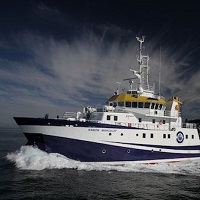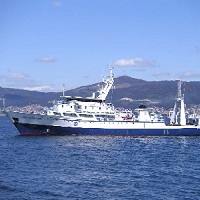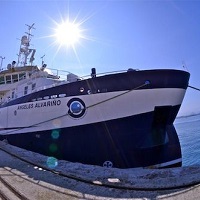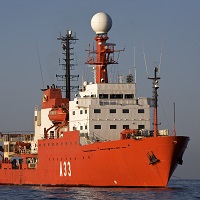Contact for the resource
Barcelona University(UB)
17 record(s)
Type of resources
Categories
Topics
INSPIRE themes
Keywords
Contact for the resource
Provided by
Years
Formats
Status
-

Impact of exploitation of mineral resources on the deep-sea ecosystems (MIDAS project)
-

Practical teaching techniques oceanographic
-

The EU funded MIDAS RTD project (7th FP, gran agreement 603418) overarching objective is to determine the impact of deep-sea mining on deep marine ecosystems. The eruption of the submarine volcano of El Hierro in 2011_12 and its impacts on the ecosystem are, in some aspects, a possible analog of deep ocean mining. The was focused on the research of the effects on the seabed and benthic and pelagic ecosystems of nepheloid layers and acidic waters resulting from the eruption. Inspection tasks has been carried out and, when possible, sampling of rocks, sediments and water by the ROV "Liropus 2000. Sampling of surface sediments through multicore, box-corer and Van Veen grab, and profiling and sampling of the water column, especially near the bottom, using CTD with rosette. The areas studied are the slope where the eruption and sectors more or less close with varying degrees of involvement took place, including sectors not affected in both flanks of El Hierro. Work out bathymetric mapping and seismic profiling also are been made.
-

The EU funded MIDAS RTD project (7th FP, gran agreement 603418) overarching objective is to determine the impact of deep-sea mining on deep marine ecosystems. To investigate the behaviour and the effects of heavy metal rich resuspended sediment plumes over benthic organisms and ecosystems, the University of Barcelona coordinates a plume generation and monitoring experiment in the bay of Portman, SE of Spain, where millions of tones of metal rich mine tails from onshore mines were dumped from 1957 to 1990. Prior to the seafloor disturbance experiment to generate the plumes, a careful mapping of the study area, and in particular of the area covered by the mine tails deposit was carried out. Two vessels are used for the disturbance experiment. The first vessel generates the plumes by bottom trawling, while the second one monitors the plume evolution through time with a variety of sensors, including acoustics. Moorings with sediment traps, current-meters, mussel ropes and baited traps are deployed in and around the seafloor area disturbed by the trawler.
-

ROV inspection of the seafloor from the continetnal shelf to depths in excess of 1500 m, with special attention to submarine canyons. Complementary CTD castts, multibeam and sub-bottom profiler acquisition. Occasional SVPs.
-

N/A
-

Paleoseismological integrated study of active structures in the southern margin of Iberia
-

Strata formation in the European continental margin
-

Mass Transfer and Ecosystem Response
-

N/A
 Catálogo de datos del IEO
Catálogo de datos del IEO